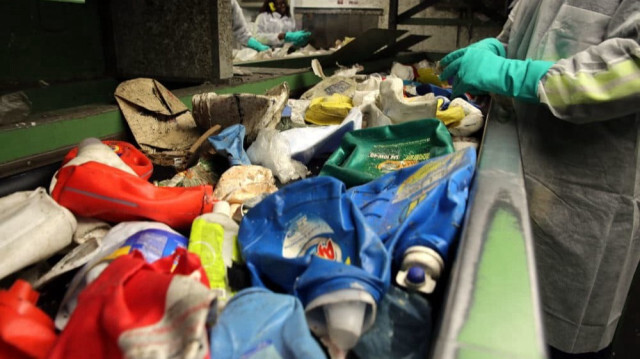
Study of 160 toy samples, child products show presence of mercury, lead, other toxic chemicals that can damage children's soft organs, mental health
Health experts have recommended that better government regulation policies would help after a study found toxic chemicals in toys and other goods for children in Bangladesh.
Experts told Anadolu that the study raises grave concerns because the substances can severely harm children's soft organs and damage their mental health.
Researchers from the Dhaka-based Environment and Social Development Organization (ESDO) and BAN Toxics, Philippines, conducted the study where they tested 160 samples of toys and other products for children in an X-ray Fluorescence (XRF) analysis and found mercury, lead, bromine, cadmium, arsenic and persistent organic pollutants in all.
Dr. Abu Jamil Faisel, a public health expert, told Anadolu that lead is used to color toys because it is inexpensive. But it can first affect teeth because children put toys in their mouths. The toxic metal can make teeth fragile and affect bones hampering normal growth.
“Stunting children is a common cause of lead poisoning,” according to Faisel, who said toxic metal exposure lowers the IQ level or hampers the intellectual capacity of a child.
“We first have to stop at the source (of contaminating),” he added.
The poisons are also found in ceramic goods and agricultural products.
Faisel recommended a multisectoral approach and policies to stop lead and toxic metal contamination in goods and food.
Secretary General of ESDO Shahriar Hossain, echoed Faisel and told Anadolu that heavy metals can cause serious harm to the soft organs like brain cells, the heart and kidneys, and damage to early childhood growth.
More dangerously, all are made from recycled plastic which is a toxic chemical, he said.
“We also found arsenic and mercury that are carcinogenic,” he said, which is potentially cancer-causing.
“We recommend a policy restricting those toxic chemicals and recycled plastic in toys,” he said.
Bangladesh's revenue in the Toys & Games market is estimated to reach $863.9 million in 2024, according to Statista, a German online platform that specializes in data gathering. On the flip side, Bangladesh exported $50 million in 2023, according to the Export Promotion Bureau.
China is the main supplier of raw material and final goods in the local market, said Hossain, and there is no restriction on importing contaminated toys so “we badly need regulation for safe toy import.”
UNICEF said the number of children affected by lead is about 35 million in Bangladesh and the country has the world's fourth-highest rate of death due to lead exposure.

